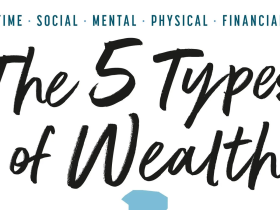For years, air travel has been touted as the safest way to get from point A to point B. But after a series of recent high-profile aviation incidents, public confidence in flying has taken a hit. According to a recent poll, only 64% of Americans now consider air travel safe—down from 71% last year.
A String of Troubling Incidents
While flying is still statistically safer than driving, recent crashes and near-misses have left many passengers uneasy. Just last month, a midair collision near Washington, D.C., between a jetliner and an Army Black Hawk helicopter resulted in no expected survivors. Days later, a Delta Air Lines flight crash-landed in Toronto, leaving passengers shaken but miraculously unscathed.
These weren’t isolated incidents. In Arizona, two small planes collided in midair, and in Florida, a private aircraft skidded off the runway after an engine failure.
While commercial airline disasters remain rare, the recent uptick in incidents has raised questions about whether flying is becoming riskier—or if public perception is simply shifting.
Is Flying Still the Safest Way to Travel?
Despite the recent wave of accidents, experts say air travel remains far safer than most other forms of transportation. Statistically, the odds of dying in a plane crash are about 1 in 13.7 million, compared to 1 in 101 for car crashes.
This is largely due to rigorous safety regulations, advanced aircraft technology, and strict pilot training requirements. Large commercial jets undergo extensive inspections before every flight, and pilots must complete thousands of hours of flight training before they’re allowed to operate passenger planes.
However, some aviation professionals are warning that cracks in the system may be starting to show.
Air Traffic Controller Shortages and FAA Understaffing
One major concern is the ongoing shortage of air traffic controllers. The Federal Aviation Administration (FAA) has been struggling to fill critical positions, leading to longer shifts, increased fatigue, and heightened risk for human error.
To make matters worse, the Trump administration’s Department of Government Efficiency recently fired nearly 400 FAA employees, further straining an already understaffed agency. With fewer controllers managing an ever-growing volume of flights, some experts worry this could contribute to future aviation mishaps.
Turbulence, Climate Change, and Other Risk Factors
Beyond staffing shortages, climate change is also playing a role in aviation safety. A growing body of research suggests that climate change is increasing turbulence, making flights bumpier and potentially more dangerous.
Severe turbulence has been responsible for an increasing number of passenger injuries, with recent incidents over the North Atlantic leading to emergency landings. Experts warn that unexpected turbulence, particularly clear-air turbulence, is becoming more common and harder to predict.
Public Reaction: Rising Anxiety Around Flying
For many travelers, these reports have made flying feel more stressful than ever. Social media has been flooded with nervous flyers sharing their concerns, while some have taken extra precautions—like one woman who went viral for anointing her plane with holy oil before takeoff.
Despite these fears, aviation experts maintain that commercial airlines are still the safest way to travel. But public perception is shifting, and airlines may need to address growing anxiety by improving transparency about safety measures.
Flights in North America, especially from US carriers ARE NOT SAFE. The damage to the FAA and the industry as a whole in the last month are catastrophic. Our planes crash ALL THE TIME. Bring back Mayor Pete and DEI. https://t.co/OZddrvZyAM
— @michaelbeaton.bsky.so . . . 〽️GO BLUE! (@MichaelBeaton) February 17, 2025
What Airlines and Regulators Are Doing About It
In response to rising concerns, airlines and regulators are doubling down on safety measures. The FAA has announced plans to hire more air traffic controllers and expand pilot training programs to address growing demand.
Additionally, airlines are implementing new technology, such as AI-driven predictive maintenance, to identify potential aircraft issues before they become serious problems. Many are also increasing their focus on passenger safety education, encouraging travelers to pay closer attention to pre-flight instructions and always wear seatbelts while seated.
Yes, the recent string of aviation incidents is concerning. Yes, public trust in air travel has taken a hit. But when you look at the data, flying is still incredibly safe—safer than driving, biking, or even walking in some cities.
While airlines and the FAA need to address key safety concerns, including air traffic controller shortages and climate-related turbulence, passengers can take comfort in knowing that the strictest safety measures in the world govern commercial aviation.
So, the next time you board a plane, take a deep breath, buckle up, and remember: statistically speaking, you’re in one of the safest places you could be.




